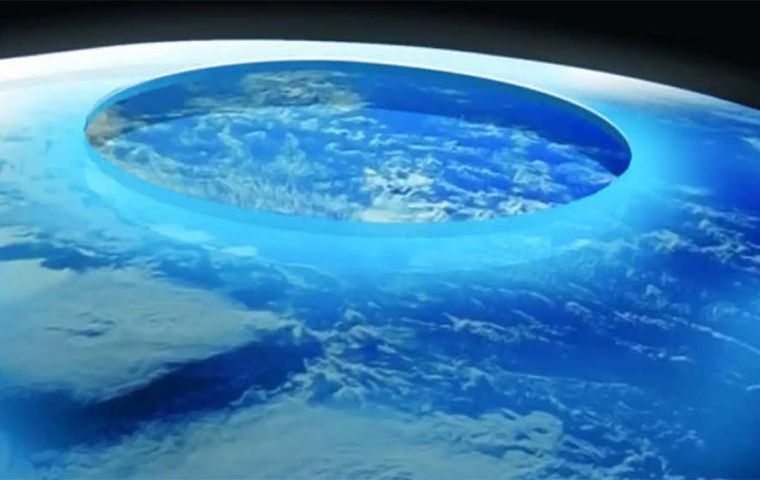MercoPress. South Atlantic News Agency
Ozone hole makes third appearance over Argentine Patagonia in 2022
 On average the hole passes above Ushuaia three times a year. “This year we had that condition on October 12, and on Monday and Tuesday” this week, Fernández also noted.
On average the hole passes above Ushuaia three times a year. “This year we had that condition on October 12, and on Monday and Tuesday” this week, Fernández also noted. Argentine scientists warned this week about the possible consequences on people's skin stemming from the ozone hole positioning itself over the Argentine provinces of Santa Cruz and Tierra del Fuego, which is taking place for the third time in 2022.
The hole usually appears between August and December over Antarctica. The phenomenon was discovered in the 1970s. Since then, a worldwide agreement has been reached to reduce emissions of chlorofluorocarbons (CFCs), a gas that affects the atmosphere.
Residents in Patagonian areas were advised to stay off sunny spaces and take other preventive measures because, despite environmental agreements currently in force, it will take many years before the situation reverses. In the meantime, the hole's negative effects on people's health can be serious.
Argentina's National Meteorological Service (SMN) reported that the hole spent a couple of days over Ushuaia and parts of Patagonia. According to the World Meteorological Organization (WMO), the area affected by the ozone hole reached its peak this year on Sept. 16. It was larger than that recorded in 2010 and 2012 but smaller than that of 2011. The ozone deficit this year is also larger than in 2010 and 2012.
These events are particularly harmful in October and November when the sun is high on the horizon and the intensity of ultraviolet radiation increases considerably. In October this year ozone's values dropped by over 50% its normal figures.
The Ozonesonde Program developed at the Ushuaia Global Atmospheric Watch station carries out a weekly survey, as part of a program resulting from a joint project between the SMN the Government of Tierra del Fuego (Argentina), and Spain's National Institute of Aerospace Technology (INTA Spain) and the State Meteorological Agency (AEMET Spain).
“More UV rays reach the surface” due to the ozone hole filtering less of them, SMN's Cindy Fernández explained. “They are harmful, they generate a rapid reddening of the skin, regardless of the temperature. They are one of the main causes of skin cancer,” she added.
“Human beings in their activities generated large amounts of CFCs. These gases last for many years and also break down ozone molecules,” she elaborated.
Using ozone to manufacture certain products led to “the abnormal reduction of the ozone layer,” Fernández also pointed out.
On average the hole passes above Ushuaia three times a year. “This year we had that condition on October 12, and on Monday and Tuesday” this week, Fernández also noted.
”Then there were some days when we were very close to 220 Dobson units (anything below that value is considered a hole),” Fernández also underlined.




Top Comments
Disclaimer & comment rulesCommenting for this story is now closed.
If you have a Facebook account, become a fan and comment on our Facebook Page!